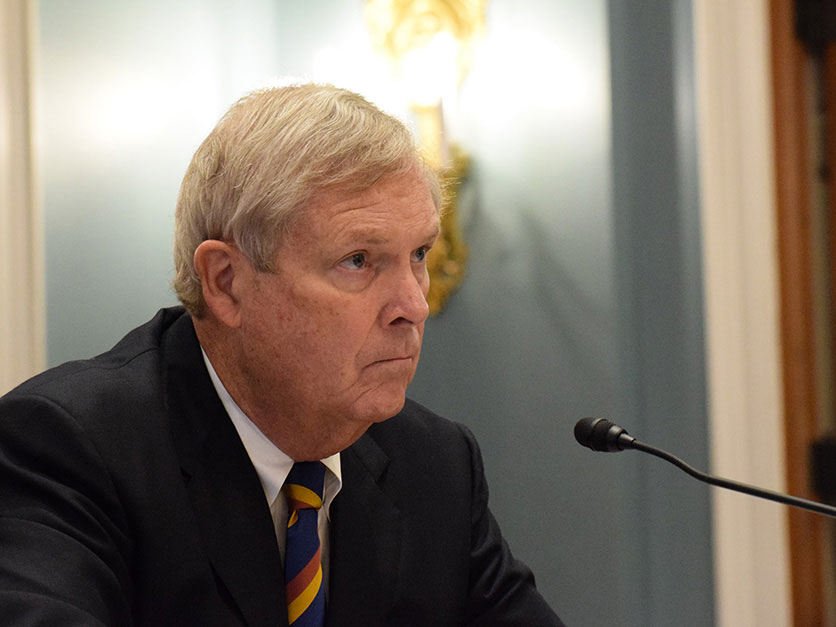Agriculture Secretary Tom Vilsack said the U.S. has made it clear at the climate summit in Glasgow that the United States has "re-engaged" in the global climate change discussion but also has emphasized that “agriculture is not part of the problem. It's part of the solution.”
“I think people have been impressed with the extent and degree to which farmers, ranchers and producers and organizations that represent them are going to be part of the solution," he told reporters on a conference call from Glasgow on Friday.
Vilsack also touted several efforts the United States is making on its own and with other nations to both invest in and collaborate on efforts addressing climate change, including the administration’s Climate-Smart Agriculture and Forestry Partnership Initiative, on which it received about 400 comments.
He said USDA should start accepting applications under that program in the first quarter of fiscal 2022 and start awarding money in the second quarter, which starts Jan. 1 and runs through March 31.
Vilsack also cited the AIM for Climate Initiative, an effort started by the U.S. and the United Arab Emirates that now involves 33 countries and 48 non-governmental partners. It was officially launched Tuesday, and Vilsack noted that countries have pledged more than $4 billion in increased investments for climate-smart agriculture and food systems innovation over the next five years.
Vilsack also mentioned a panel he moderated Friday featuring Callie Eideberg, director of government relations at the Environmental Defense Fund; Fred Yoder of Solutions from the Land; Ben Fargher, Cargill's vice president of sustainability for the North American supply chain; and Rob Larew, president of the National Farmers Union.
A common theme was that farmers of all sizes need the proper measurement and verification tools to assess the value of specific soil health practices. In addition, carbon markets need to be voluntary, simplified and transparent.
More regulations are not the answer, Yoder said. “I’m a carrot guy. Farmers respond to incentives,” he said.
Eideberg stressed the necessity of protecting land that has not been disturbed.
“One innovation EDF would really like to see is the keeping of forests, wetlands and grasslands completely intact,” she said. “It should be a no-brainer that we should not make this problem harder than it already is.”
The Biden administration has pledged to conserve 30% of the United States’ land and water by 2030.
Vilsack said that spending bills being considered by Congress would provide “rocket fuel” to help the U.S. advance climate-smart practices on U.S, farmland.
"Everything that we want to do, whether it's targeting our current conservation programs to climate-smart agriculture, or investing in expanded renewable energy production, or encouraging methane capture and reuse, or conducting research that leads to reduced emissions, or finances large-scale power projects and demonstration projects, we can do all of that today, on resources that are available to us today,” he said.
But the “Build Back Better program," he said, by providing transportation and broadband funding, would provide that infrastructure and “will essentially provide rocket fuel to these initiatives. It will accelerate and dramatically expand the opportunities that we are now engaged with."
The $1.2 trillion infrastructure bill being considered by Congress includes $65 billion for broadband; the Build Back Better Act has $27 billion for agricultural conservation.
For more news, go to www.Agri-Pulse.com


![Steve headshot 250x200[1]](http://www.agri-pulse.com/ext/resources/Headshots/Staff-Photos/thumb/Steve_Headshot_250x200[1].JPG?1738947158)